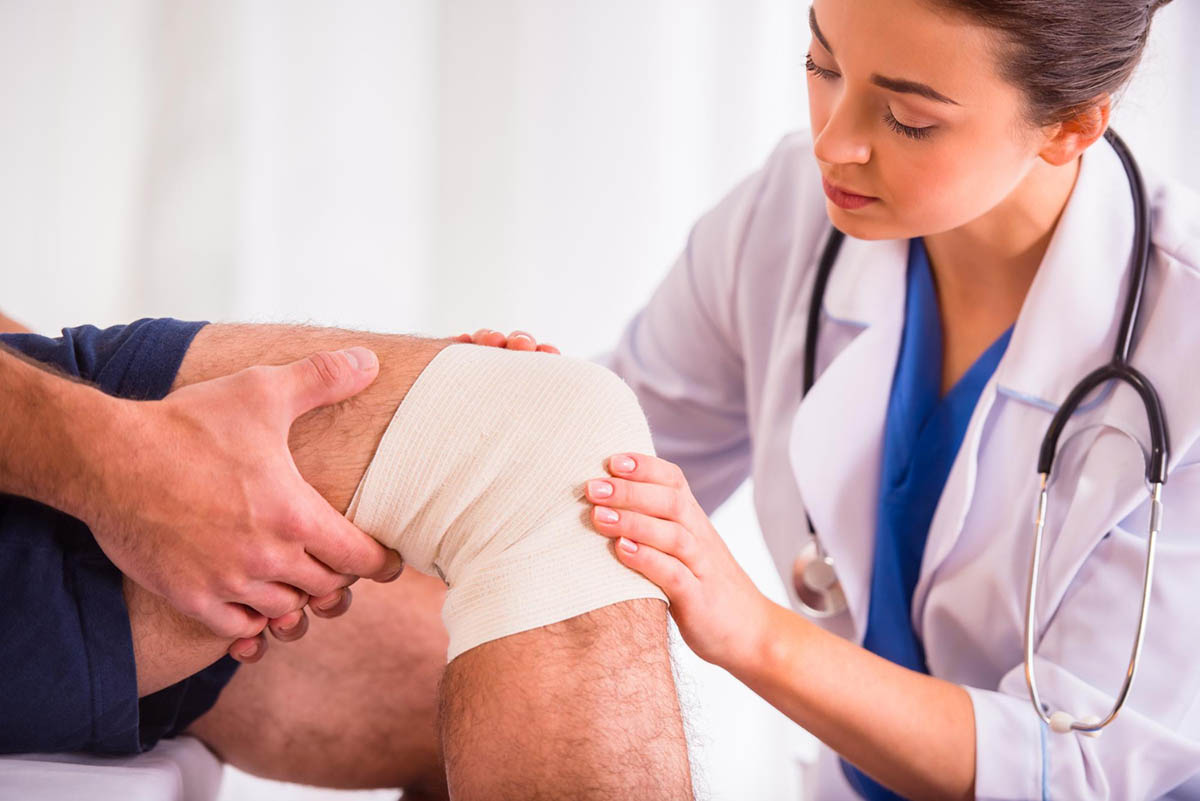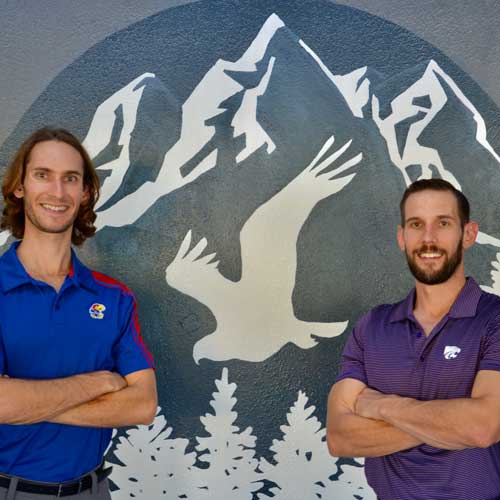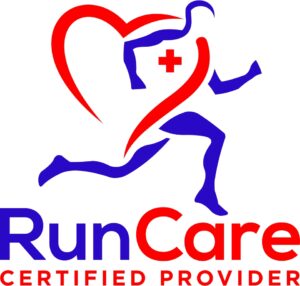
Knee injuries are a widespread concern, particularly among athletes and active individuals. One area of specific interest is the lateral collateral ligament (LCL), a vital stabilizing structure in the knee.
In the United States, approximately 25% of patients who seek emergency room care for acute knee pain have collateral ligament injuries, although LCL injuries are less common than MCL injuries. Isolated LCL injuries are more frequently observed in women and are prevalent in high-contact sports. Clearly, proper diagnosis and treatment are crucial to ensure effective recovery and prevent further complications.
This blog will explore the anatomy, causes, symptoms, diagnosis, treatment options, and prevention strategies for LCL injuries, focusing on insights from sports medicine. Understanding these aspects is essential for managing and recovering from such injuries effectively.
Anatomy of the Knee
The knee is a complex joint comprising bones, cartilage, soft tissues, and tendons. The knee is a complex joint comprising bones, cartilage, soft tissues, and tendons. The knee joint, including the fibular collateral ligament (LCL), also known as the fibular ligament, along with supporting structures like the arcuate ligament, is one of the four major ligaments of the knee, running along the outer side of the joint. It connects the femur (thigh bone) to the fibula (one of the leg bones), providing stability and preventing excessive side-to-side movement. The LCL is a critical band of tissue that reinforces the knee’s lateral stability. The joint capsule, which surrounds the knee joint, also contributes to its stability and integrity.
Causes of Lateral Collateral Ligament (LCL) Injuries
Direct Trauma to the Knee
Direct blows or impacts to the medial knee can stretch or tear the lateral collateral ligament or affect the posterolateral corner, leading to collateral ligament knee injuries. Such trauma, often from a high-energy blow, is usually seen in contact sports where collisions are frequent, resulting in acute knee injury.
Sports-Related Activities
Athletes involved in fast-paced sports like football, soccer, and skiing are particularly susceptible to posterolateral knee injuries and lateral collateral ligament tears due to the high-impact and twisting motions required. According to a study, LCL injuries account for approximately 8% of all knee ligament injuries among athletes.
Improper Biomechanics
Poor alignment and mechanics during physical activities, such as improper running or jumping techniques, can place undue stress on the LCL, increasing the risk of lateral collateral ligament injury treatment.
Occupational Hazards
Jobs that involve heavy objects, repetitive knee motions, or standing for extended periods can contribute to LCL injuries. Workers in construction or manual labor are at higher risk.
Anatomical Factors
Certain anatomical variations, such as naturally higher ligament laxity, can predispose individuals to LCL injuries. Women, for instance, are more prone to isolated LCL injuries compared to men.
Symptoms of Lateral Collateral Ligament (LCL) Injuries

LCL injuries can range from partial tears to complete tears, each presenting with varying symptoms. Common symptoms include:
- Pain and tenderness on the outer side of the knee
- Swelling and bruising around the knee joint
- Acute knee instability or a feeling that the knee is giving way
- Limited range of motion
- Difficulty bearing weight on the affected leg
- Difficulty maintaining the lateral knee pain
A clinical examination will help in determining the severity of these symptoms and guiding the appropriate treatment plan.
Diagnosis of Lateral Collateral Ligament (LCL) Injuries
Accurate diagnosis is crucial for effective treatment. Healthcare providers typically use a combination of physical examination and imaging tests. During a physical exam, the doctor will check for pain, swelling, and knee instability. Imaging tests like magnetic resonance imaging (MRI) or X-rays can provide detailed views of the ligament and surrounding structures, confirming the extent of the injury and assessing the normal range.
Treatment Options for Lateral Collateral Ligament (LCL) Injuries
Medical Management
Initial treatment often involves rest, cold packs, compression, and elevation (RICE) to reduce swelling and pain. Clinical evidence supports the recommendation of over-the-counter pain relievers or anti-inflammatory medication. Severe injuries might require surgical repair, immobilization with a hinged brace, or even platelet-rich plasma injections to aid in healing the torn ligament, as recommended by health care providers.
Physiotherapy and Rehabilitation
Physiotherapy plays a critical role in the recovery process. A tailored rehabilitation program helps restore strength, flexibility, and stability to the knee, promoting knee joint stability through functional progression. This approach ensures gradual improvement in mobility and function, incorporating conditioning exercises, balance exercises, and aerobic exercises to enhance recovery and strengthen the injured tissue, especially around the fibular collateral ligament. Techniques like isometric knee flexion exercises and optimizing correct knee positioning further protect lateral knee structures during rehabilitation. Electrical stimulation may also be used as part of physiotherapy to aid in muscle strengthening and pain management.
Home Remedies and Self-Care
At-home care can support recovery. Applying ice packs, using compression bandages, and elevating the leg can help manage symptoms. Gentle stretching and strengthening exercises, as advised by a physical therapist, are also beneficial. Additionally, heat packs can be used to alleviate muscle stiffness and promote circulation, aiding in the healing process.
How Physical Therapists Can Help in LCL Injuries
Rehabilitation Programs
Physical therapists and athletic trainers design comprehensive rehabilitation programs to address the specific needs of athletes in sports with LCL injuries. These programs focus on restoring knee function and preventing future injuries.
Manual Therapy
Hands-on techniques, including massage and joint mobilization, can alleviate pain and improve mobility. Manual therapy also helps reduce scar tissue formation.
Functional Training
Therapists guide patients through exercises that mimic daily activities and sports-specific movements. This training helps rebuild confidence and ensures a safe return to regular activities.
Education and Home Exercise Programs
Education on proper knee mechanics and body movements is essential. Physical therapists provide patients with home exercise routines to maintain progress and prevent re-injury.
Progress Monitoring and Adjustments
Regular assessments allow therapists to track progress and adjust treatment plans as needed. This ensures that the rehabilitation process is on the right track and adapts to the patient’s evolving needs.
Prevention Strategies for Lateral Collateral Ligament (LCL) Injuries

Proper Warm-up and Stretching Techniques
A thorough warm-up and stretching routine prepares the muscles and ligaments for physical activity, reducing the risk of sudden movement.
Strength and Conditioning Programs
Strengthening the muscles around the knee, especially the quadriceps and hamstrings, provides better support and stability to the joint.
Sport-Specific Training
Athletes benefit from training that focuses on the movements and demands of their specific sport. This helps improve performance and reduces injury risk.
Use of Protective Gear
Wearing appropriate protective gear, such as knee braces or pads, can offer additional support and protection during high-risk activities.
Rest and Recovery
Allowing adequate rest and recovery time between intense activities prevents overuse injuries. It is also crucial to listen to the body and avoid pushing through pain.
Environmental Considerations
Being mindful of playing surfaces and conditions, such as wet or uneven ground, can help prevent slips and falls that lead to LCL injuries.
Recovery and Prognosis
The recovery time for LCL injuries varies depending on the severity. Mild sprains may heal within a few weeks with proper care, while severe tears might require several months of rehabilitation. Early intervention and adherence to a structured treatment plan enhance the chances of a full recovery, including athletic activity. In cases where knee function does not fully return, knee replacements and recovery might be considered as a treatment option.
Living with LCL Injuries
Living with an LCL injury can lead to chronic pain, but with appropriate management and lifestyle adjustments, individuals can continue to lead active lives. Modifying activities to avoid undue stress on the knee and incorporating regular strengthening exercises, including those targeting the iliotibial band, can help maintain knee health. A hinged knee brace can provide additional support and stability during activities. Clinical evidence supports the recommendation of over-the-counter pain relievers or anti-inflammatory medicines.
WildHawk Physical Therapy‘s Approach
At WildHawk Physical Therapy, we prioritize individualized treatment plans for sports athletes. Our experienced team of physical therapists works closely with patients to develop personalized treatment plans that address their unique needs. From initial assessment to recovery and beyond, we are committed to helping our patients achieve optimal outcomes.
Conclusion
Though less common than other knee ligament injuries, lateral collateral ligament (LCL) injuries require prompt diagnosis and appropriate treatment for effective recovery. With a combination of medical management, physiotherapy, and preventive strategies, individuals can regain knee function and return to their daily activities and sports. At WildHawk Physical Therapy, we are dedicated to providing comprehensive care to support our patients’ journey to recovery.
FAQs
What does LCL injury feel like?
LCL injuries typically present with pain and tenderness on the outer side of the knee, swelling, instability, and difficulty bearing weight on the affected leg.
Does LCL heal on its own?
Mild LCL sprains may heal with conservative treatment, including rest and physiotherapy. However, severe tears might require surgical intervention for proper healing.
Can you walk on a damaged LCL?
Walking with an LCL injury depends on the severity. Mild sprains allow for some mobility, while severe tears can significantly impair walking ability and require the use of crutches or a brace.









